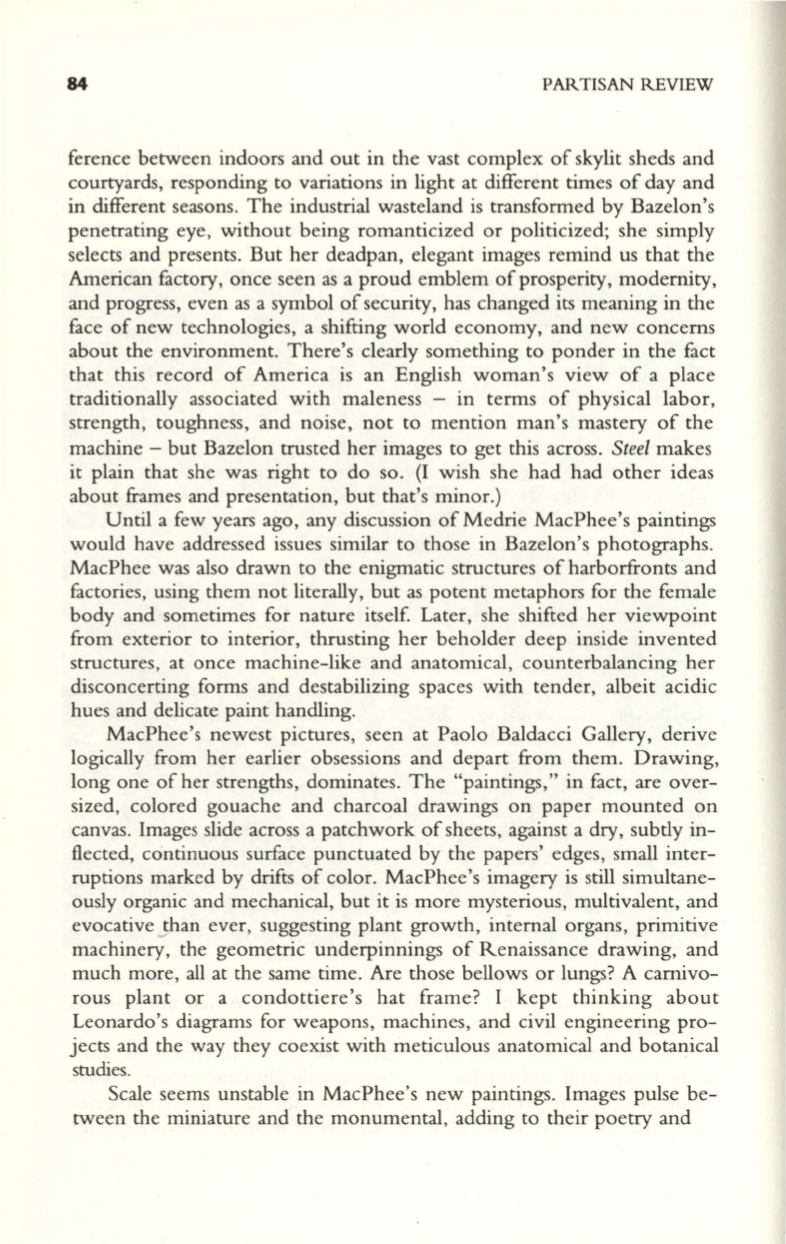
84
p
ARTISAN REVIEW
ference between indoors and out in the vast complex of skylit sheds and
courtyards, responding to variations in light at different times of day and
in different seasons. The industrial wasteland is transformed by Bazelon's
penetrating eye, without being romanticized or politicized; she simply
selects and presents. But her deadpan, elegant images remind us that the
American factory, once seen as a proud emblem of prosperity, modernity,
and progress, even as a symbol of security, has changed its meaning in the
face of new technologies, a shifting world economy, and new concerns
about the environment. There's clearly something to ponder in the fact
that this record of America is an English woman's view of a place
traditionally associated with maleness - in terms of physical labor,
strength, toughness, and noise, not to mention man's mastery of the
machine - but Bazelon trusted her images to get this across.
Steel
makes
it plain that she was right to do so. (I wish she had had other ideas
about frames and presentation, but that's minor.)
Until a few years ago , any discussion of Medrie MacPhee's paintings
would have addressed issues similar to those in Bazelon's photographs.
MacPhee was also drawn to the enigmatic structures of harborfrontsand
factories, using them not literally, but as potent metaphors for the female
body and sometimes for nature itself. Later, she shifted her viewpoint
from exterior to interior, thrusting her beholder deep inside invented
structures, at once machine-like and anatomical, counterbalancing her
disconcerting forms and destabilizing spaces with tender, albeit acidic
hues and delicate paint handling.
MacPhee's newest pictures, seen at Paolo Baldacci Gallery, derive
logically from her earlier obsessions and depart from them. Drawing,
long one of her strengths, dominates. The "paintings," in fact, are over–
sized, colored gouache and charcoal drawings on paper mounted on
canvas. Images slide across a patchwork of sheets, against a dry, subtly in–
flected, continuous surface punctuated by the papers' edges, small inter–
ruptions marked by drifts of color. MacPhee's imagery is still simultane–
ously organic and mechanical, but it is more mysterious, multivalent, and
evocative t an ever, suggesting plant growth, internal organs, primitive
machinery, the geometric underpinnings of Renaissance drawing, and
much more, all at the same time. Are those bellows or lungs? A carnivo–
rous plant or a condottiere's hat frame? I kept thinking about
Leonardo's diagrams for weapons, machines, and civil engineering pro–
jects and the way they coexist with meticulous anatomical and botanical
studies.
Scale seems unstable in MacPhee's new paintings. Images pulse be–
tween the miniature and the monumental, adding to their poetry and


